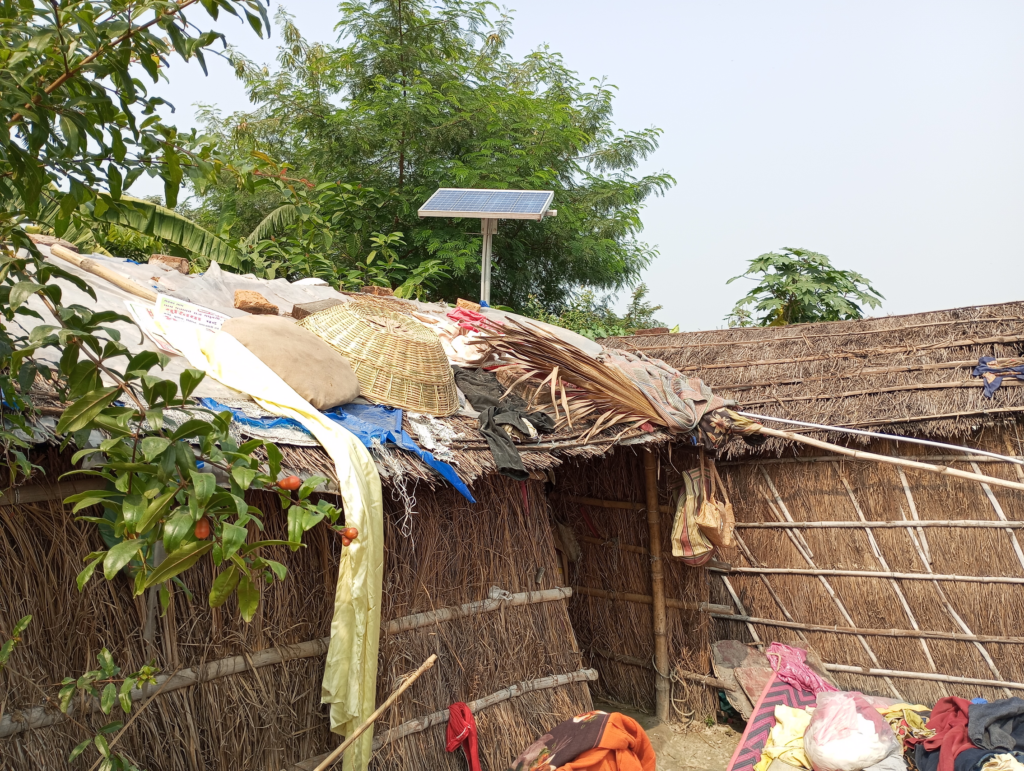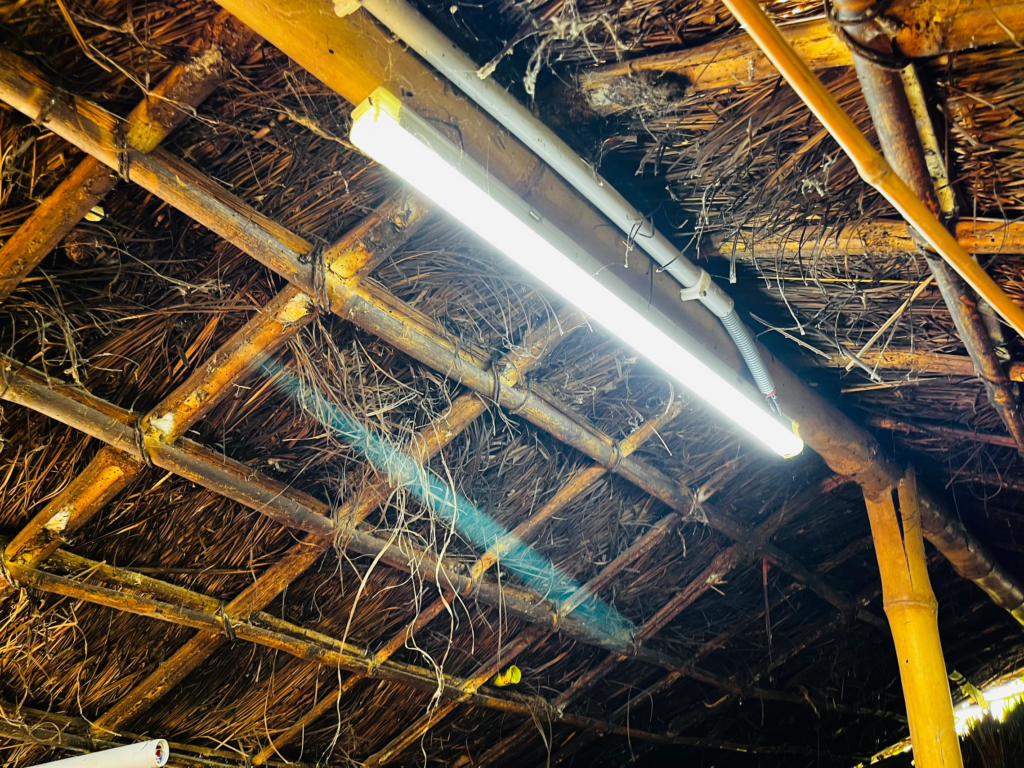New solar mini-grids now power a small rural Indian village — and have eliminated the incidence of deadly snake bites.
On the outskirts of Muzaffarpur town in Bihar, adjacent to an under-construction four-lane highway, lies the village of Patahi. This nondescript settlement is home to over 200 residents who live in thatched huts constructed from hay and bamboo.
There’s a popular Hindi proverb, says twenty-year-old Patahi resident Sita Devi, “diya tale andhera,” which loosely translates to “darkness under the lamp.” This expression, she says, describes the irony of her village, situated beside a power station, yet without electricity.
Nearly ninety-seven percent of India’s snakebite deaths are concentrated in rural and marginalized communities, linking snakebite vulnerability to socioeconomic status.
– Diwash Gahatraj
The lack of electricity, along with poor housing, has made the village a breeding ground for snakes, one of which, in 2020, made its way into Devi’s house and bit her. “Fortunately, I received prompt treatment that saved my life,” Devi says.
Snake bites, a neglected tropical disease, are frequent in India. In 2019, snake bites reportedly killed 54,600 people in India and maimed nearly 2.5 million. Bihar records approximately 4,500 snakebite-related deaths annually and places third on India’s state-by-state list of snakebite fatalities. Nearly ninety-seven percent of India’s snakebite deaths are concentrated in rural and marginalized communities, linking snakebite vulnerability to socioeconomic status.
Over the past three years, there have been twelve reported snake bites in the village of Patahi — three of them deadly. Thirty-five year old Rajesh Manjhi, fatally bitten in March of 2022, left behind a wife and three children, now struggling financially.
But the villagers now have hope that snake bites might become less of a threat, thanks to the arrival in February 2023 of solar mini-grids. These mini-grids will power, at first, fifty houses in the village, enabling residents to monitor their homes for snakes that may have entered — a task that’s impossible without light. Since the arrival of solar-powered light, villager Pavitra Manjhi says, “not a single case of snake bite has been reported this year.”

Solar lighting is particularly significant for this community, in which most residents belong to the underprivileged Musahar community. The Musahars were (and still are) relegated by the caste system to the most menial labor, with no possibility of upward mobility. The state of Bihar is a caste-ridden society, and the Musahar community has always experienced social exclusion and disadvantage. Many villagers work as daily laborers in agriculture or construction. “As we don't have land rights,” Manjhi explains, “we have been unable to secure our own electricity connections despite living next to a power station.”
Sister Gladys Joseph, the head of Prabhat Tara Health Centre in Muzaffarpur, reports that almost ninety percent of the patients in her center seeking treatment for snake venom come from the lower-income segments of society. The health center specializes in snakebite cases and handles over 10,000 incidents annually. Joseph adds, “We receive people from different parts of the state. Daily wage laborers, farmers, and odd job workers are the primary victims of snake bites.”
Likewise, worldwide, there has been a surge in venomous snakebites in developing countries grappling with humanitarian crises and migration.
Many snake bites can be blamed on a lack of street lights and household electricity. There are myriad reasons for the widespread lack of electricity in many villages across the country, including poverty, resource scarcity, political apathy, inadequate planning, and electricity theft. Even electrified villages experience long power cuts. Despite government plans to electrify rural areas, many Indian villages lack access to power connections.
What’s more, in developing countries like India, even solar energy has a dark side, including illegal land acquisition for solar grid installations, the high price of solar units, and poor management of solar plants. However, Pitahi village offers something of a success story. “Over fifty houses have received solar mini-grids, [each] powering two tube lights and a socket for mobile phone charging,” says Subodh Kumar Pandey, secretary of Akhil Bharatiya Gramin Yuva Vikas Samiti, the Muzaffarpur-based social development organization that facilitated the installation. He adds that the fifty mini-grid solar units and their accessories were offered free of cost.
More solidly constructed homes would help mitigate the likelihood of snake bites in Patahi, as would street lights. And the village and its residents still have a long journey ahead to achieve full electrification through solar power. Development official Pandey notes that there are still ten to fifteen houses waiting for solar mini-grids, but he is confident that those installations will occur by mid 2024. And while solar mini-grids present a viable means of electrification for Patahi and other areas of rural India, it faces some challenges, including a dependence on weather conditions: during overcast or rainy days, the efficiency of the solar energy system will be reduced. But for now, as long as the sun is shining, the village’s residents are safer than they used to be.




